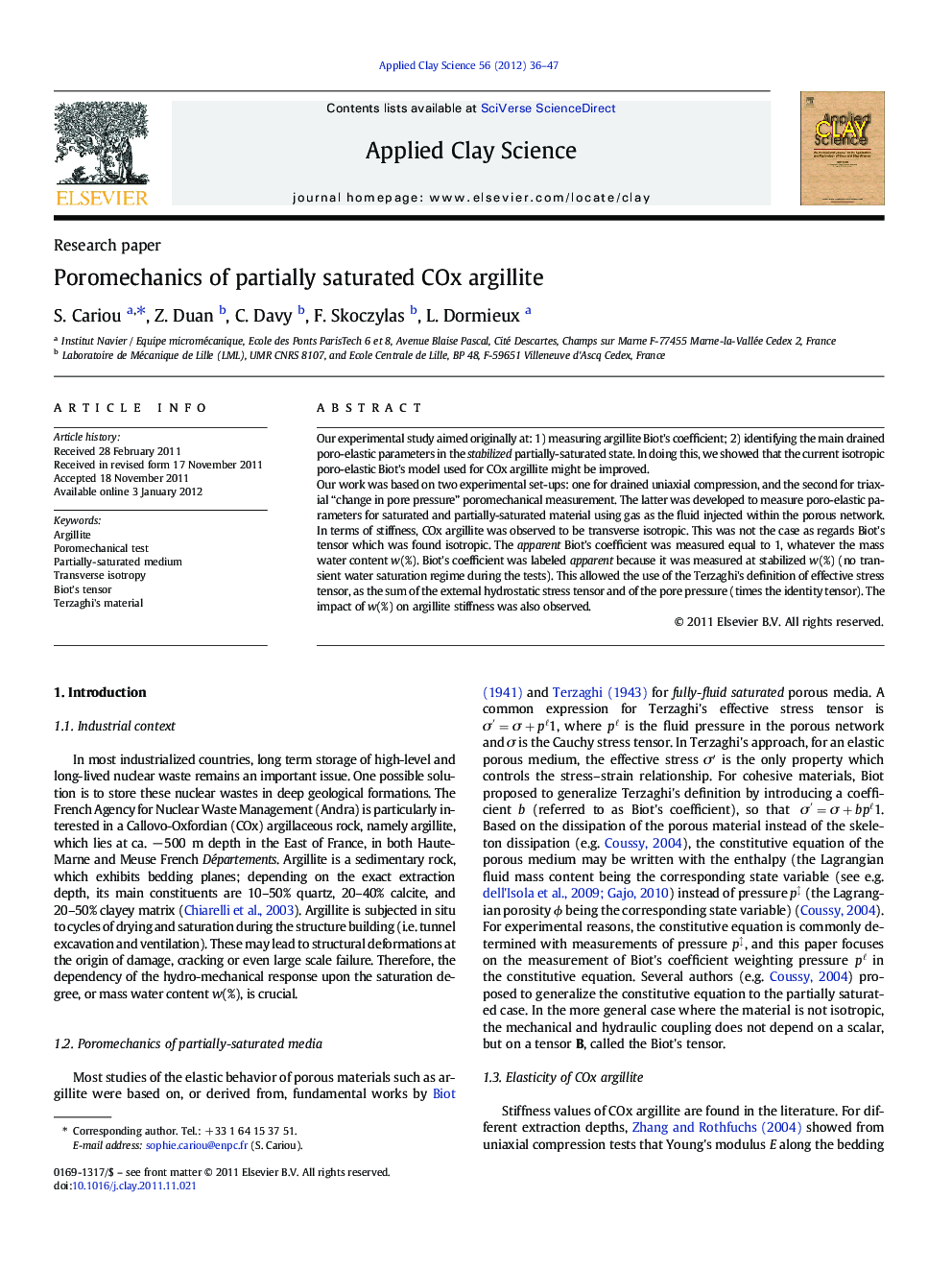| کد مقاله | کد نشریه | سال انتشار | مقاله انگلیسی | نسخه تمام متن |
|---|---|---|---|---|
| 1695392 | 1519110 | 2012 | 12 صفحه PDF | دانلود رایگان |

Our experimental study aimed originally at: 1) measuring argillite Biot's coefficient; 2) identifying the main drained poro-elastic parameters in the stabilized partially-saturated state. In doing this, we showed that the current isotropic poro-elastic Biot's model used for COx argillite might be improved.Our work was based on two experimental set-ups: one for drained uniaxial compression, and the second for triaxial “change in pore pressure” poromechanical measurement. The latter was developed to measure poro-elastic parameters for saturated and partially-saturated material using gas as the fluid injected within the porous network.In terms of stiffness, COx argillite was observed to be transverse isotropic. This was not the case as regards Biot's tensor which was found isotropic. The apparent Biot's coefficient was measured equal to 1, whatever the mass water content w(%). Biot's coefficient was labeled apparent because it was measured at stabilized w(%) (no transient water saturation regime during the tests). This allowed the use of the Terzaghi's definition of effective stress tensor, as the sum of the external hydrostatic stress tensor and of the pore pressure (times the identity tensor). The impact of w(%) on argillite stiffness was also observed.
► Our experimental study aims originally at measuring COx argillite Biot's coefficient.
► In terms of stiffness, COx argillite is observed transverse isotropic.
► An original triaxial poromechanical test is designed to measure Biot's tensor.
► The apparent Biot's tensor is found isotropic and equal to 1.
► The transient strain response depends on the loading nature.
Journal: Applied Clay Science - Volume 56, February 2012, Pages 36–47